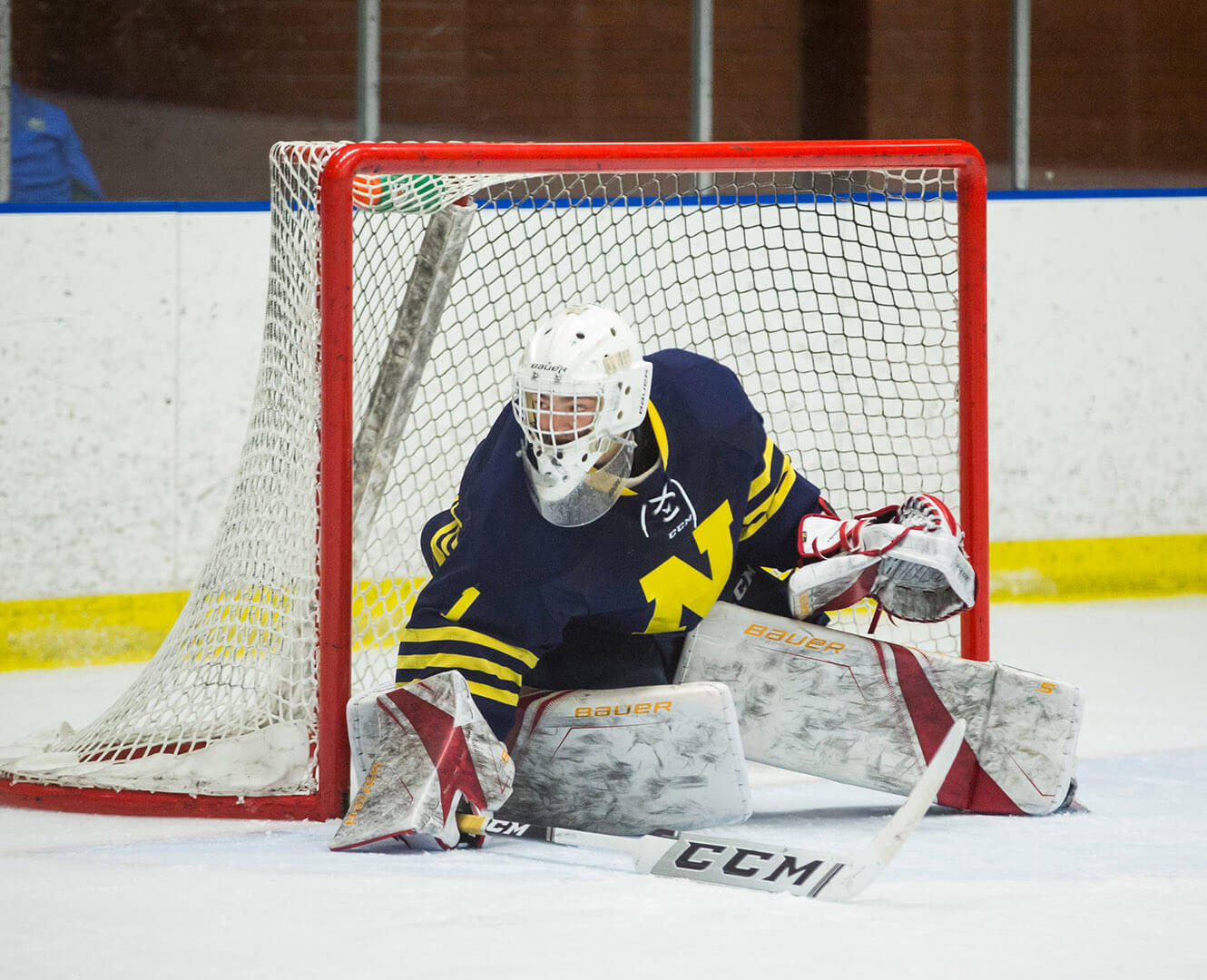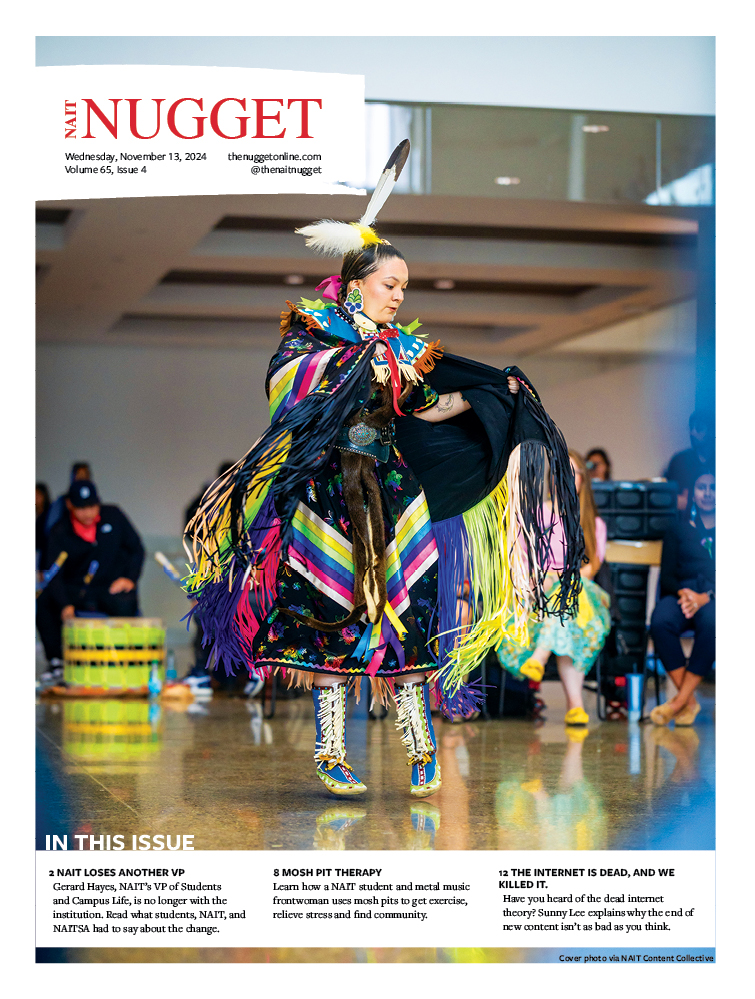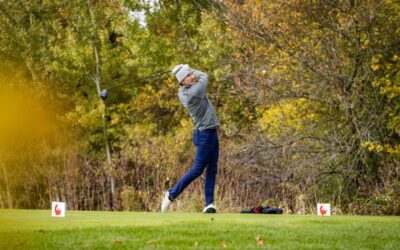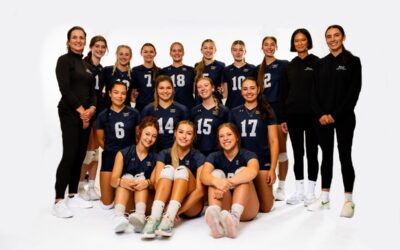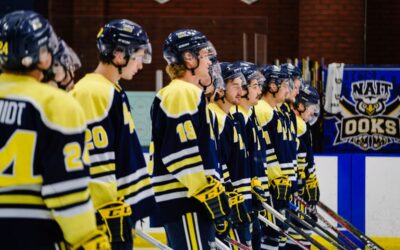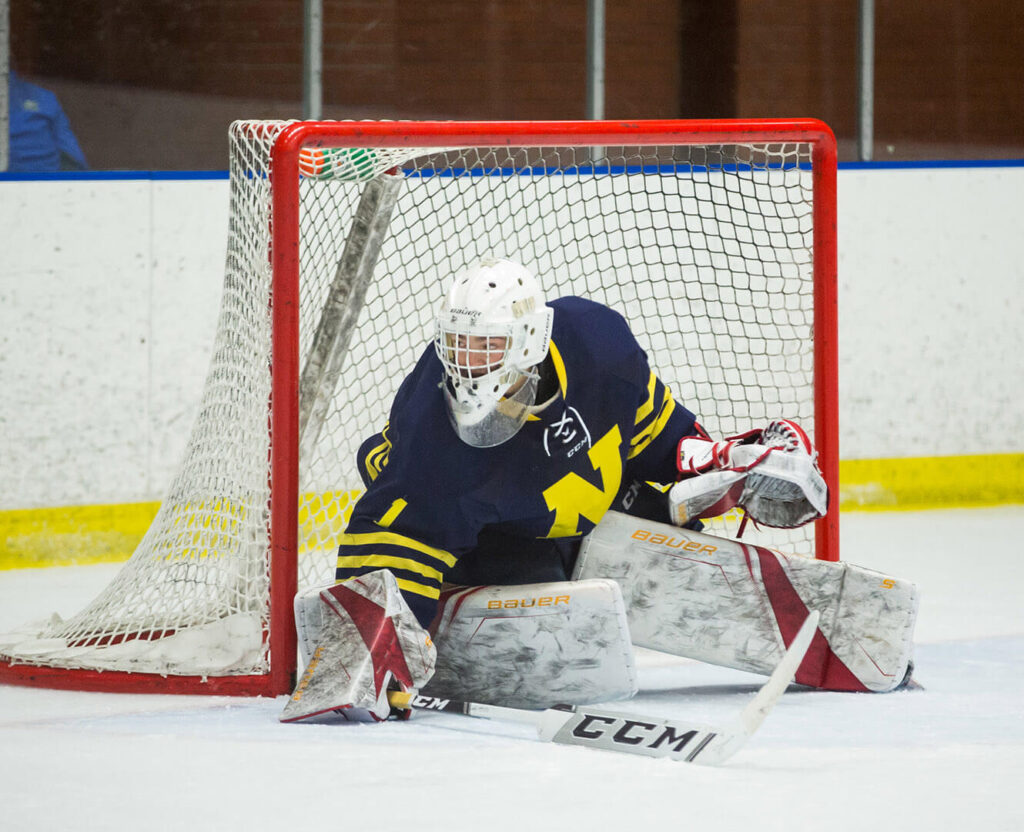
Photo by Railene Hooper
By Paige Gordon
Goalie Jordan Papirny played in the Western Hockey League for four seasons–three with the Brandon Wheat Kings and one with the Swift Current Broncos, before joining the Ooks.
When junior hockey came to an end, Papirny had to decide what the next step was for his hockey career. Papirny, like many players, chose the route of transitioning from the WHL to the ACAC.
It begs the question: what is the transition from the NHL feeder league to our collegiate league like?
One of the biggest changes when transitioning from the WHL to ACAC is having to balance a hockey schedule and an academic schedule. While playing in the WHL there’s constant pressure of NHL scouts coming to watch you play. While in the ACAC, the pressure is in trying to find a balance between performing well on the ice and in the classroom.
“From a hockey standpoint, the mentality was a lot different because there are guys who are really fully invested in school, and there’s guys who are 50-50 kind of into school and hockey, and then some guys are just strictly hockey. So there’s a lot of different attitudes which make it kind of challenging from a team standpoint because you know guys have other things to do and worry about,” said Papirny.
“So (for some guys),winning and losing isn’t as serious. It is not the only thing going on. But overall hockey is relatively similar, everyone grows up and plays together.”
Many players who play in the WHL have to move far from home with the sole purpose of playing hockey. This makes hockey the forefront of their mind and their main purpose. Being a student athlete makes it harder to focus on just hockey when there are midterms to worry about.
On game day Jordan is able to shift his focus from academics to hockey.
“You can put the school stuff aside that you worked hard on from Monday through Thursday and just relax and play,” said Papirny.
“As well, the prioritization of a schedule is what leads to the success of being a student athlete.”
There’s the perception that student athletes could face more stress than non-student athletes.
“You can look at it from both sides. For myself, I kind of see hockey as my time to take my mind off of school. Whereas someone else may not have something necessarily like [hockey]. They’re doing school their whole time. And for us we get to go in the locker room and talk with all the guys and take our minds off of school, so you kind of have that open space to forget about school and take some stress off,” said Papirny.
Papirny’s advice for hockey players who are making the transition from junior to the next phase of their hockey career was to consider what they want their future to look like.
“Do your research on the school and the program. A lot of people can fall into the hockey side of things and don’t really pay attention to the school side of things and what they really want to do after. I know at 20 it’s not an easy decision to make but doing a little bit of research just by going on the school’s website and the programs they offer and also talking to guys on the teams you’re interested in,” said Papirny.
“I dont think a lot of guys utilize that as much as they should, and I think that’s something that helped me a little bit along the way. It can make the transition a little bit easier.”

